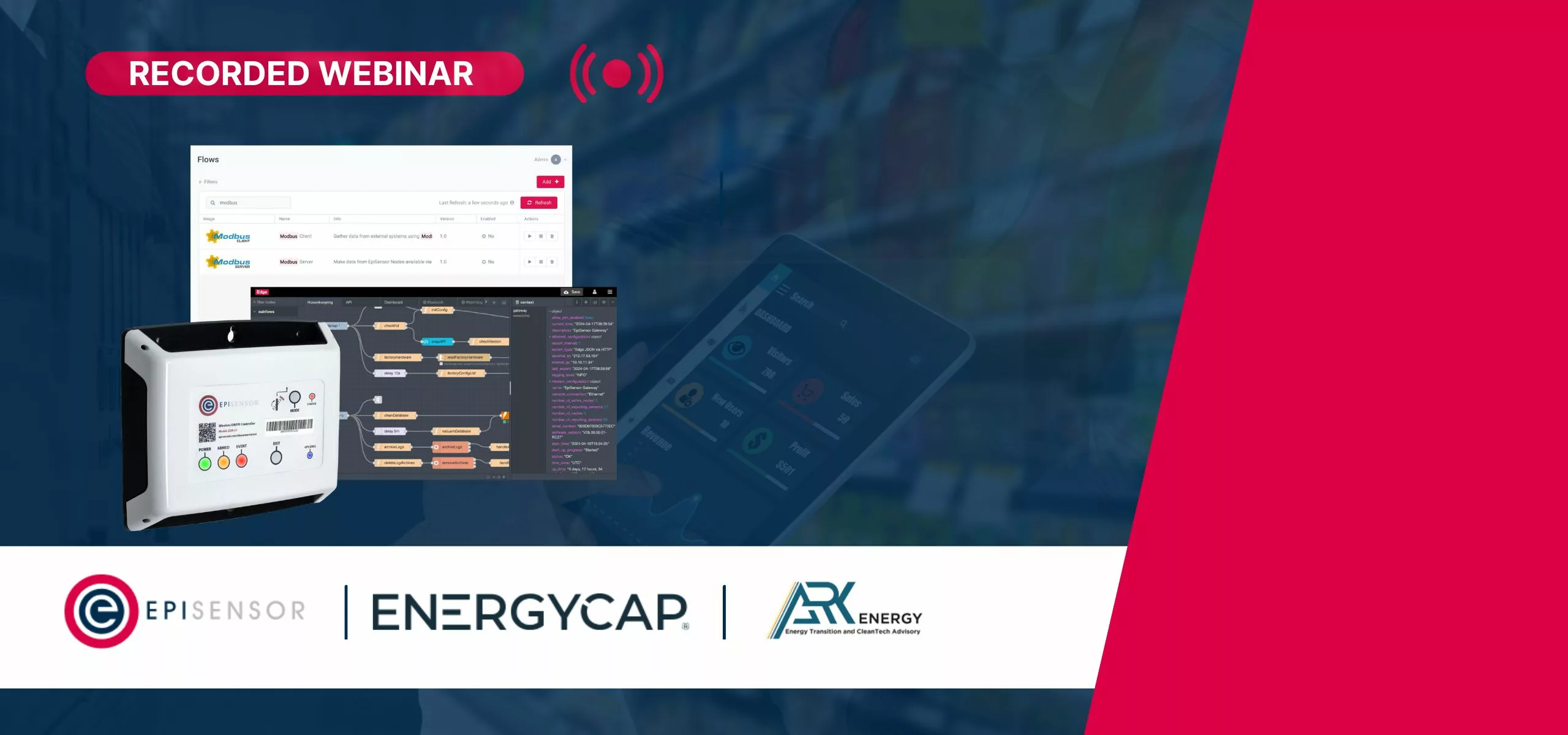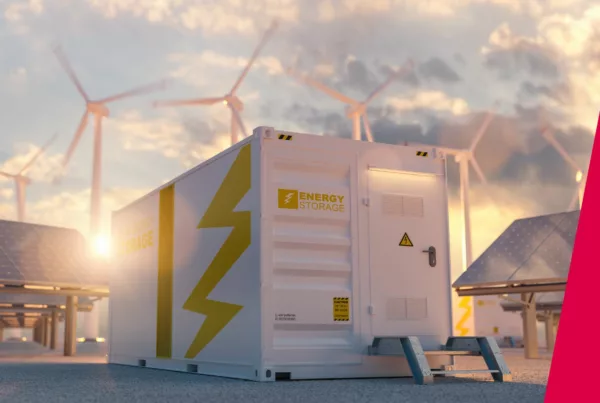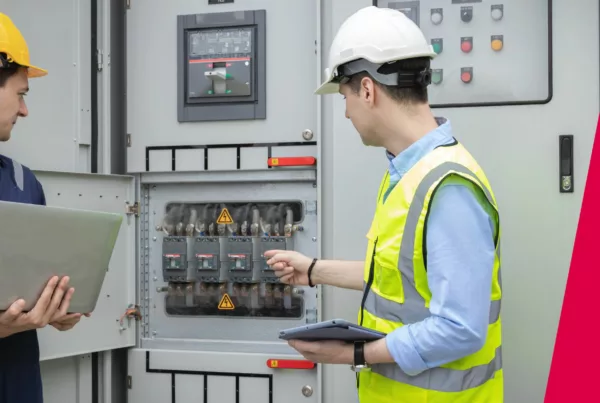Energy Management Strategies for EU Retailers and Commercial Organisations
The following has been transcribed from the webinar below, Reduce Costs and Comply: Energy Management Strategies for EU Retailers and Commercial Organisations, featuring guest speakers, Cristina Coffey, Chief Strategy Officer at EpiSensor, Aref Abouzahr, CEO and Founder of Ark Energy, and John Heinz, VP of Strategic Partnerships at EnergyCAP.
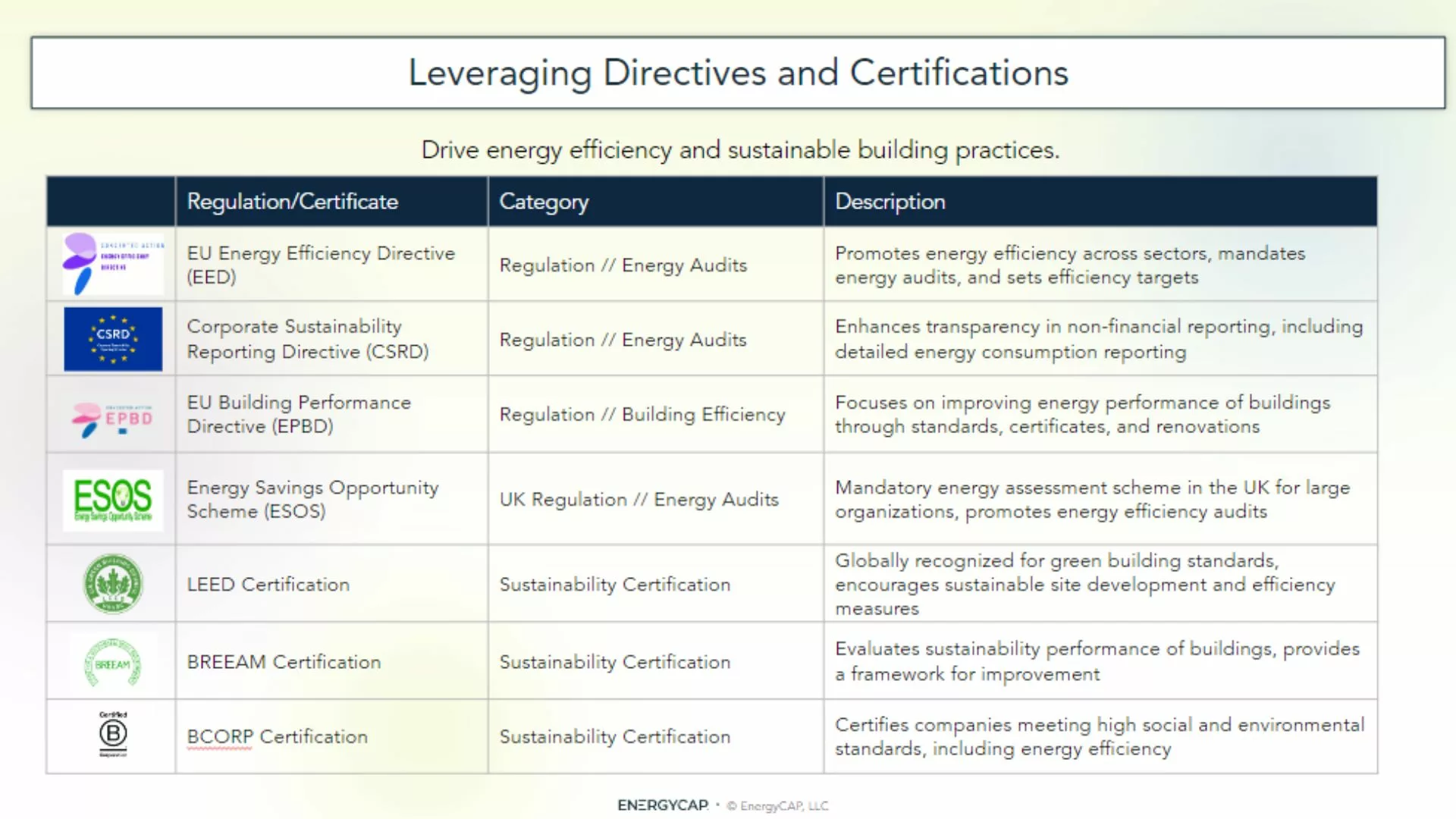
Aref Abouzahr provided an overview of important European and UK energy regulations and certifications to consider as a commercial/retail entity, such as:
- EU Energy Efficiency Directive (EED): Promotes energy efficiency across sectors, mandating specific audits and efficiency targets.
- EU Corporate Sustainability Reporting Directive (CSRD): Requires European companies (and international group structures with a presence in Europe) to report on the impact of their corporate activities on the environment and society.
- EU Building Performance Directive (EPBD): Focuses on enhancing the energy performance of buildings through standards, certifications, and retrofits.
- UK’s Energy Savings Opportunity Scheme (ESOS): A mandatory energy assessment for large organisations.
- Certifications such as LEED, BREEAM, BCorp, and ISO 50001: Recognised certifications demonstrating an organisation’s commitment to environmental standards, including energy efficiency and optimisation.
Aligning with key directives and certifications – key activities and the tools needed to progress change
- Energy Efficiency Retrofits: Enabling organisations to optimise energy usage and reduce energy spend by up to 40%.
- Digital Energy Management Platforms: Provide actionable insights and energy/carbon reporting using data analytics and digitisation, for example, EnergyCAP’s intelligent energy management platform, SmartAnalytics.
- Sub-metering: Monitor and conserve energy resources through downstream asset metering, such as chillers, boilers, SCUs, etc.
- Solar PV: The introduction of solar PV or other renewable energy sources onsite.
- Low Delta T-Rehabilitation: Eliminate Low Delta-T penalties and improve standards of comfort.
- Re-commissioning: Enhancing building performance.
- Thermal Cooling Lead Assessment: Optimising chillers.

Cristina Coffey, CSO, EpiSensor, shared actionable tips on setting up energy monitoring systems, emphasising the importance of:
- User Experience: Choose systems that are easy to install, commission, and use on an ongoing basis.
- Required Expertise: Consider infrastructure that doesn’t require specialist expertise – your onsite qualified electricians should be able to deploy and manage the system easily.
- What comes as standard: At the procurement stage, check what is included with the energy monitoring system you are purchasing. For example: Are CTs connected as standard? Do the products have robust dust and waterproof enclosures, or are these purchased separately? Purchasing an incomplete system can drive up costs at the installation stage, and for ongoing maintenance.
- Operating Environment: Ensure systems can operate under various conditions, indoors or outdoors, and in intense environments (where products are subject to extreme cleaning processes for example).
- Extensibility: Look for systems that can monitor multiple utilities (electricity, water, gas, temperature) and be expanded as needed.
- Utility Metering: Check if you can tap into utility meters with pulse counters, for example, so that you can invest further in sub-metering.
- Value-Added Capabilities: Ask yourself if the system is flexible enough to introduce environmental optimisation and asset optimisation in a cost-effective way.
- Integration Capabilities: Ensure compatibility with existing energy management platforms, BMS systems, and assets like solar PV and batteries. Intelligent energy monitoring systems can absorb weather predictions and make decisions based on this information – for example, charging batteries ahead of poor weather conditions to optimise the use of solar PV.
Real-World Success Stories
Cristina highlighted several inspiring energy management success stories that leverage EpiSensor IoT solutions:
- Woodies Retail, Ireland: Implemented sensors across 36 nationwide locations, resulting in real-time data monitoring, enhanced remote monitoring capabilities, and over 300 site-specific alerts to identify problems and opportunities. Identified numerous energy-saving opportunities through data visualisation, using EpiSensor’s energy monitoring infrastructure.
- 3Arena in Dublin: Ireland’s largest entertainment venue. Achieved 6-figure energy savings annually by optimising energy use during events and when the building is dormant.
- European Supermarket Chains: Improved refrigeration efficiency by monitoring temperatures, optimising energy use, and ensuring product safety during power outages. Real-time monitoring and calibration of refrigerators enable these retailers to reduce energy consumption and take advantage of dynamic pricing, thus reducing costs.
- Driscoll’s Cold Storage: Monitoring temperature in cold storage facilities, as well as in transit. Once logistics vehicles arrive at their destination, in-flight data is loaded to EpiSensor Gateways, enhancing Driscoll’s decision-making capabilities on temperature management.
Aref showcased a remarkable energy management and carbon accounting programme for a luxurious residential client in Dubai.
Key outcomes and benefits from the luxury residential case study in Dubai included:
- ISO50001 enabled.
- Seamless transition post ESCO exit.
- €280 K in energy savings.
- One unified system.
- Enhanced Standards of Comfort.
- Continued Energy Savings Insights.
- Enhanced board and management reporting.
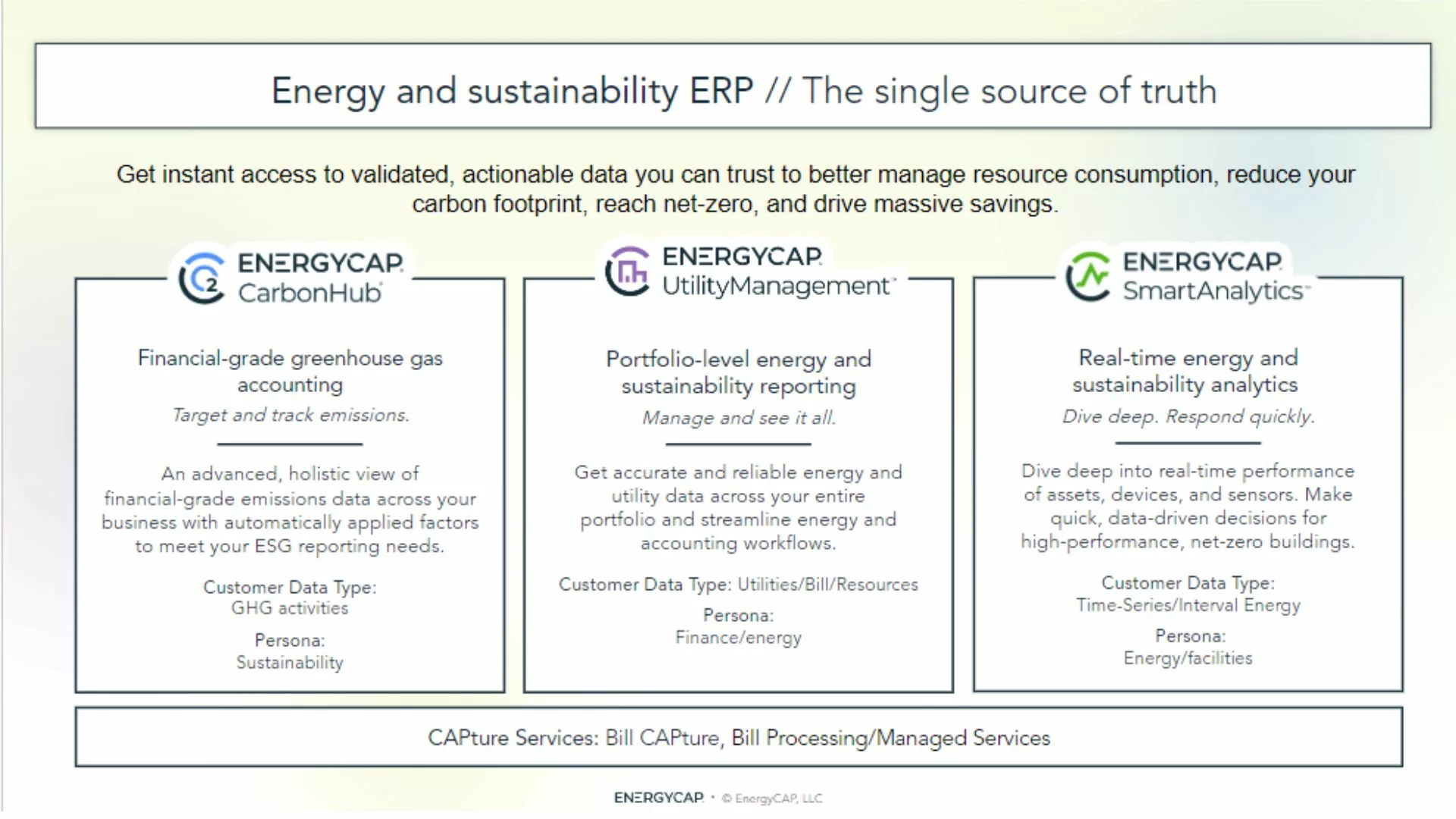
John Heinz emphasised the importance of accurate and comprehensive data in energy management. EnergyCAP’s platform offers tools for:
- Carbon Tracking (Carbon Hub): Monitor and report carbon emissions, enabling compliance with environmental regulatory changes. Track both utility and energy data, and non-utility data, such as vehicle fleet data, capital purchases, business travel, etc.
- Utility Management: Manages and reports on monthly utility bills and aggregate data.
- Real-Time Analytics (SmartAnalytics): Provides granular data to track and optimise energy use and savings. Integrating with EpiSensor IoT infrastructure, or other energy monitoring systems, SmartAnalytics powers future energy decisions for retail and commercial customers.
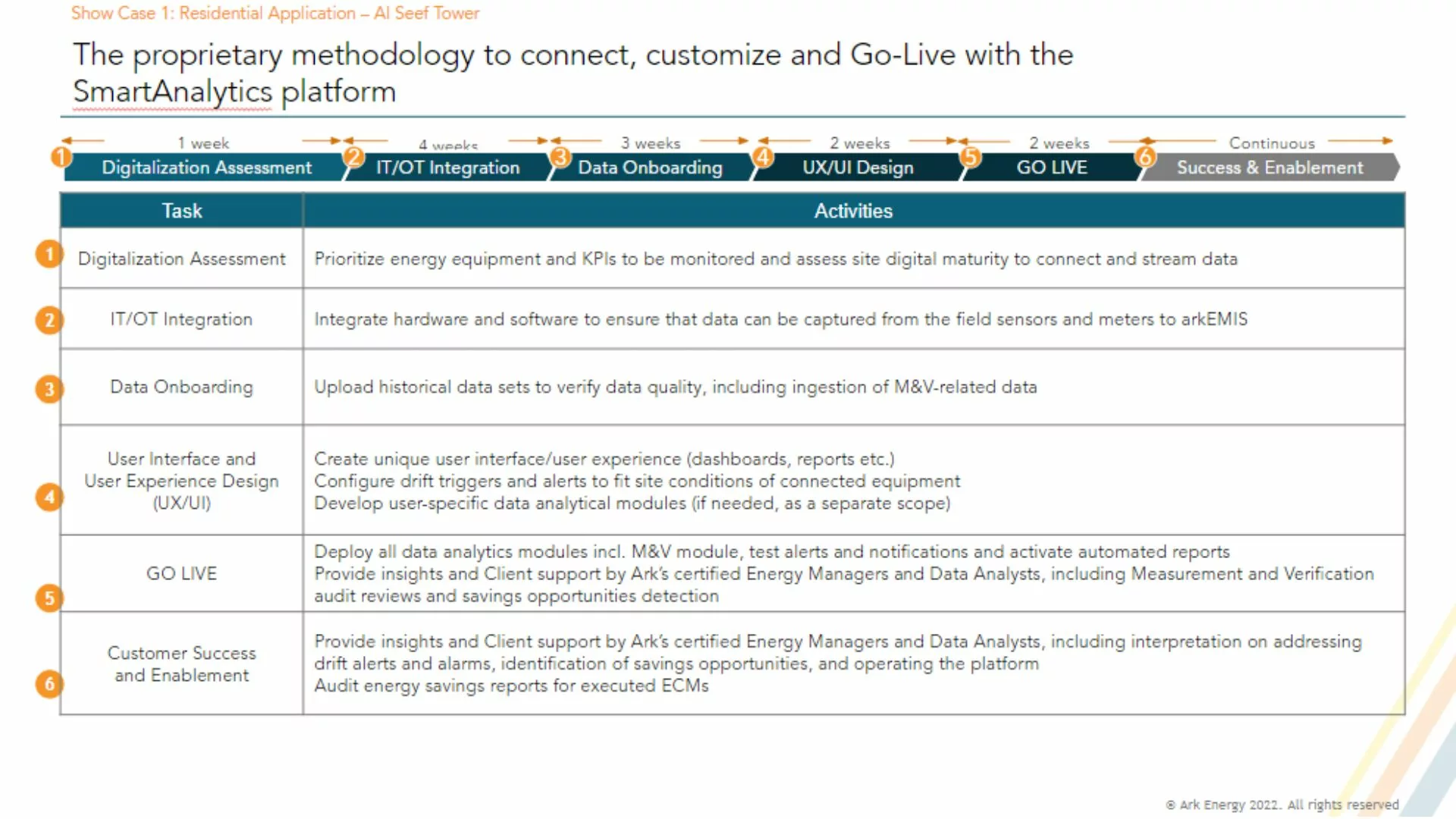
Aref Abouzahr shared insights into the SmartAnalytics implementation process, highlighting the steps to integrate a digital platform into a building:
- Define KPIs: Understand your objectives and the key performance indicators that need monitoring.
- Digital Maturity Assessment: Evaluate existing metering and sensor capabilities and add required sensors and meters.
- System Integration: Connect equipment to the chosen smart analytics platform.
- Data Onboarding: Ensure the quality and historical relevance of data.
- Customisation: Tailor dashboards, alerts, and thresholds to specific needs.
- Go Live and Enablement: Launch the platform and provide ongoing support to ensure value extraction.
Questions
- Will there be a PDF of the slides shared following the webinar? Yes, and you can download here.
- Is it possible to introduce a system like EpiSensor where I don’t own the building? Cristina Coffey at EpiSensor confirmed that yes, this is possible. As the EpiSensor system is non-invasive, it is possible to move the system from one building to another and this is something our customers have done in the past, particularly where they wish to investigate energy consumption at a particular point in time, as opposed to on an ongoing basis.
Final Thoughts
Achieving energy efficiency and regulatory compliance is a collaborative effort. By leveraging the right tools, data, and expertise, organisations can achieve significant energy savings and boost their sustainability efforts now and into the future.
Find out more about:
EnergyCAP’s SmartAnalytics’ platform.
EpiSensor’s advanced energy monitoring IoT solutions.
Ark Energy and Cleantech Advisory by connecting on LinkedIn.
